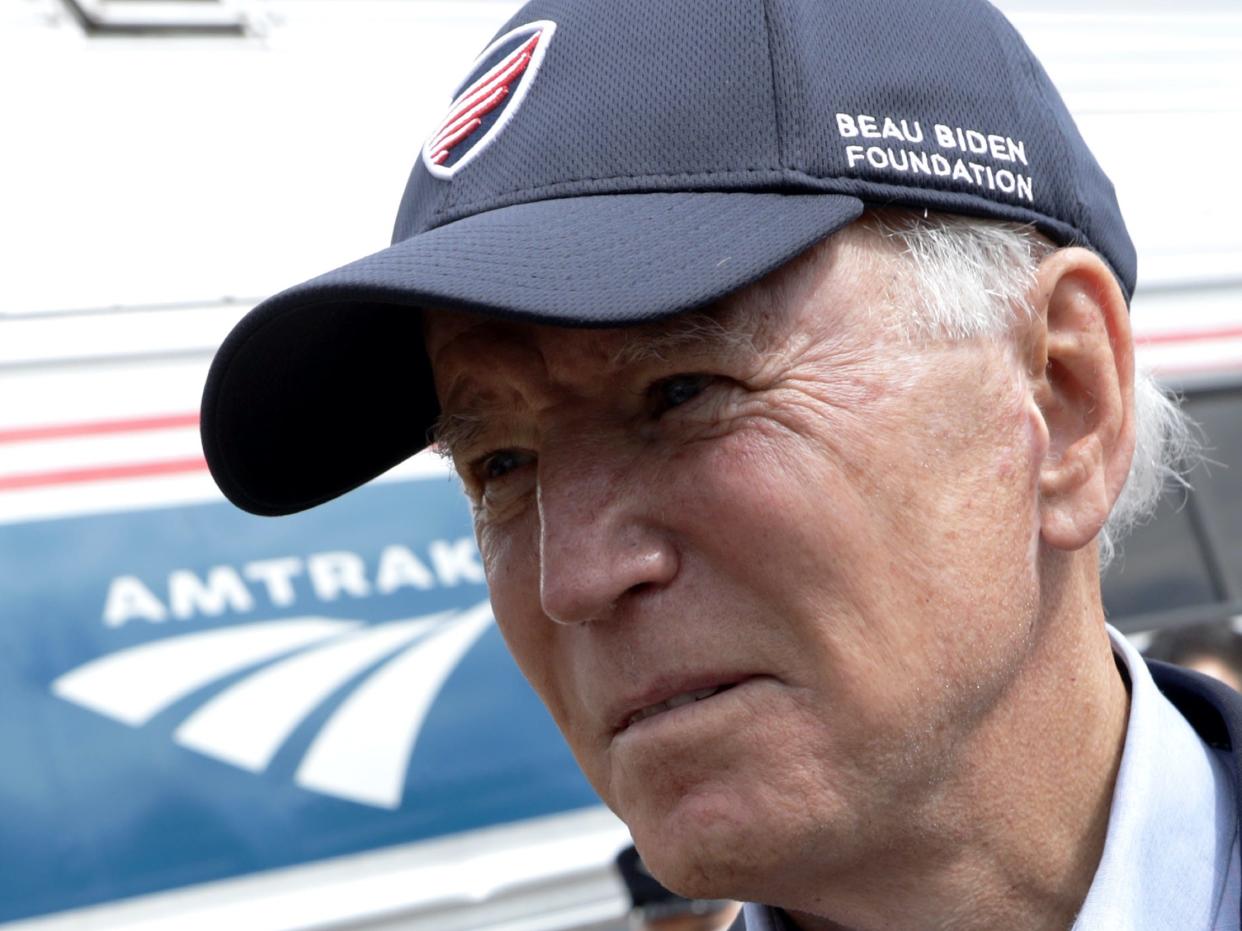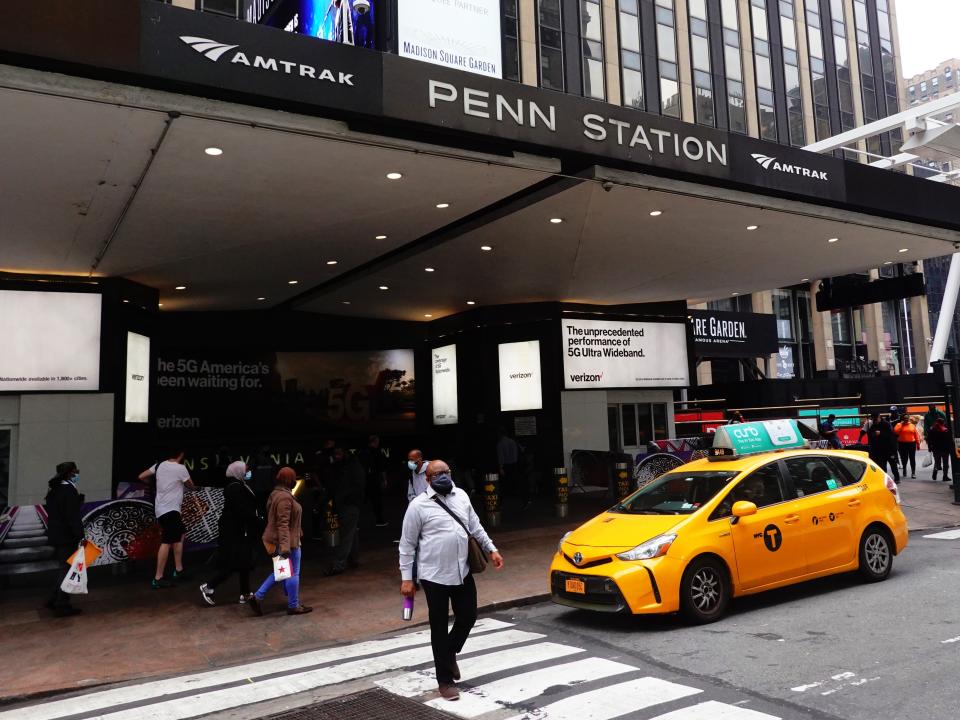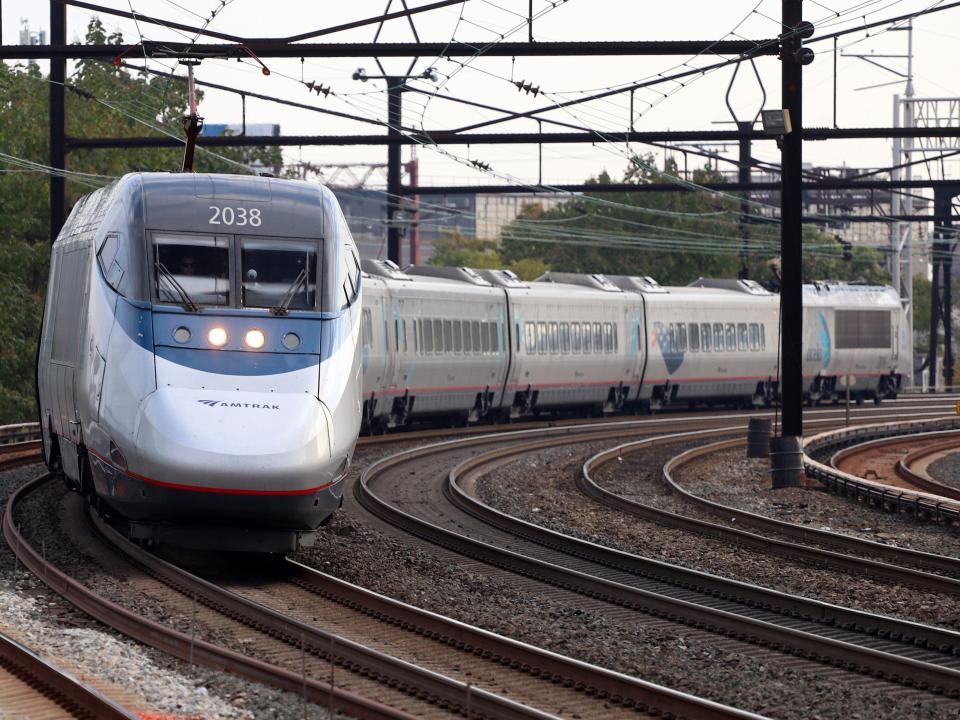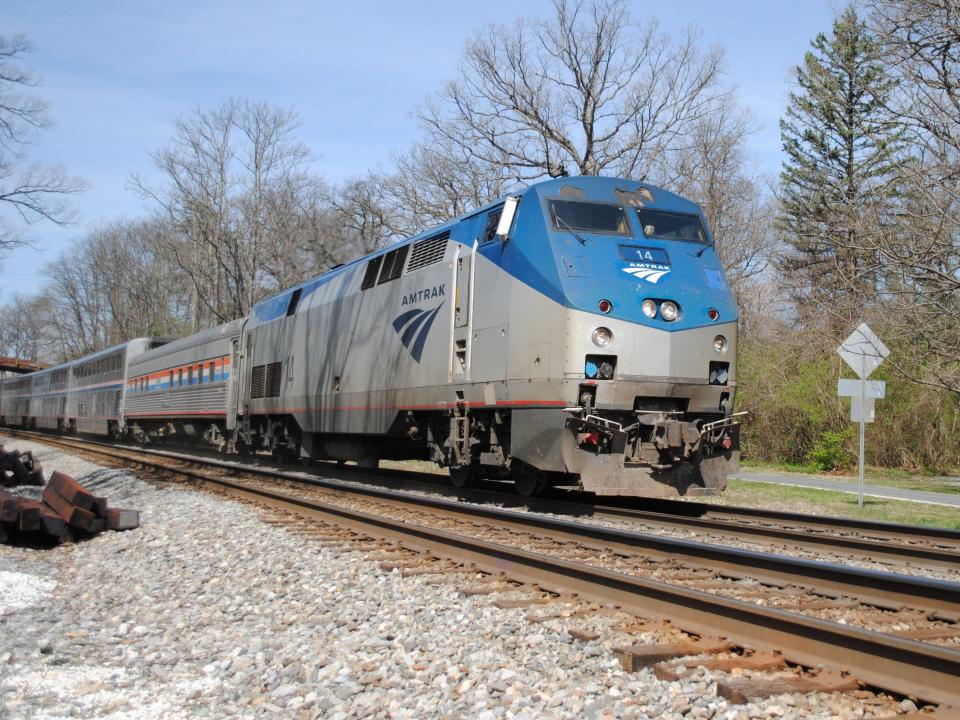Biden promised a 'railroad revolution' that could see faster trains and a return to Amtrak's nostalgic past — here's what Americans might see

- Oops!Something went wrong.Please try again later.
President-elect Joe Biden is expected to be a friend to Amtrak following decades of loyal ridership during his time in the US Senate.
A Biden presidency could finally see funding for new tunnels under the Hudson River, a project defunded by the Trump administration.
An expansion of high-speed rail is also on the table as Biden seeks clean energy solutions for transportation.
President-elect Joe Biden is no stranger to America's rail system.
Having used Amtrak to commute between Washington, DC and his home in Delaware for decades during his time as a US senator, the frequent rider earned the nickname "Amtrak Joe," as the New York Times reported. He even chartered an Amtrak train during his successful 2020 presidential campaign for a whistle-stop tour through the Rust Belt.
In 2016, one of his last acts as vice president was helping secure funding for Amtrak through a $2.45 billion loan for the Northeast Corridor, the name for Amtrak's line between Boston and Washington along which numerous major cities lie, the Associated Press reported. The loan was the largest ever in the Department of Transportation's history with most of it going towards new Acela Express trains capable of traveling 186 miles per hour.
Come January 20, Biden will once again have the opportunity to help and improve the struggling rail system that's reported losses since its inception. On his campaign website, improving the country's railroads are a priority under Biden's clean energy initiatives where the president-elect advocates for a "second great railroad revolution."
The US currently falls behind most advanced nations in rail connectivity and usage, as well as in the development of high-speed rail. Most of the country's rail usage is in the Northeast Corridor, Amtrak's only profitable sector, while long-distance trains have suffered service cuts in recent years.
Here's what America's rail system might look like under a Joe Biden presidency.
A new gateway into New York City

One of Amtrak's most pressing issues is repairing a 10-mile stretch of track between Newark and New York City, including the construction of two new tunnels under the Hudson River into New York's Penn Station. Known as the Gateway Program, the project is a three-way initiative between Amtrak, New York, and New Jersey with an estimated cost in the neighborhood of $13 billion.
The federal government under the Obama administration had planned to split the cost with the states until President Donald Trump backed out of the deal in 2017, Crain's New York Business reported, rejecting it as a local issue. It was just one of many tiffs between the federal government and New York during the Trump administration with the president and governor openly attacking each other on various occasions.
Trump had later approved $766 million in funds for one of the program's goals, building a new bridge to carry tracks over the Hackensack River located entirely in New Jersey, Politico reported. The tunnel portion remained untouched until Trump expressed interest in funding the program in May as part of an infrastructure-focused pandemic stimulus package that did not come to fruition.
Completion of the tunnel project would take around seven to eight years from its start, Cuomo said in a video to Trump imploring him to fund the project.
A Biden presidency might see the federal government's backing of the project restored to pre-Trump levels. Construction of the tunnels would reduce delays not only for Amtrak passengers traveling through the region but also for thousands of New Jersey Transit passengers that commute to and from New York City daily.
Expansion of high-speed rail

Biden campaign website promises plans to expand America's rail network to make it the "cleanest, safest, and fastest rail system in the world."
High-speed rail has long been overdue in the US as European and Asian nations have all seemingly perfected the system. Only one Amtrak line has high-speed capabilities, the Acela Express between Boston and Washington, and even then, the trainsets are restricted to well below its maximum speeds on certain stretches of the line.
The task of expanding high-speed rail has been taken up by private companies and state agencies in Florida, California, and Nevada that will connect some major cities with new lines. Connecting nearby city pairs via rail would take travelers off planes for shorter hops, just as the Acela Express has done in the Northeast Corridor by attracting travelers away from the airline shuttles.
But that would require new trackage, additional trainsets, and the ability to compete with the airlines. Amtrak upped its competitiveness when it launched non-stop Acela Express services between New York and Washington in 2019, offering a two-hour and 35-minute journey directly into the hearts of both cities.
Biden already has a track record here as his work to secure funding for Amtrak in 2016 will see faster trains join the line. The Alstom-built trains are currently in testing and scheduled to arrive in 2021, though it could be longer, as Business Insider's Mary Meisenzahl reported in January.
Resumption of long-distance services

Under CEO Richard Anderson, the former Delta Air Lines chief executive, Amtrak began cutting amenities on long-distance routes. The least profitable in the Amtrak system, these lines mainly served a small segment of the population that preferred train travel over air travel or wanted to experience the novelty of a long train journey.
Profitable routes such as the Northeast Corridor financially prop up these routes that political pressure prevents from being cut, according to the New York Times. Anderson did away with dining cars on some long-distance lines in 2019 as part of cost-cutting measures to help stem the losses on the routes, the Washington Post reported, in favor of an airline-style pre-packaged offering.
The coronavirus pandemic further impacted these trains as service was cut to three-times-weekly on most lines. As the New York Times reported, the temporary cuts may provide Amtrak with a way to permanently sever the unprofitable lines.
Increased funding to Amtrak under a Biden administration could result in long-distance trains being restored to their former glory, white tablecloths and all.
Read the original article on Business Insider

